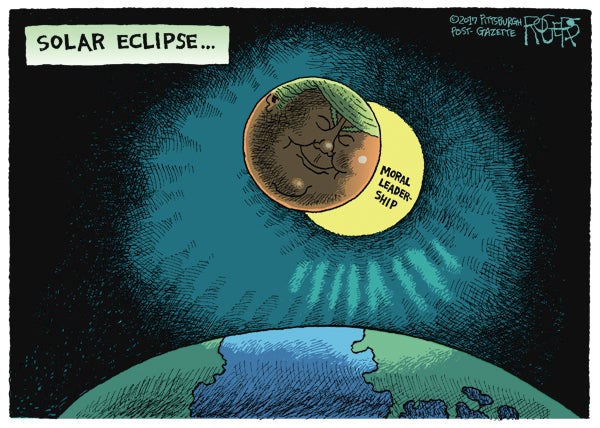Dr. Michael Bitzer: Are we approaching the end of an era?
Published 12:00 am Sunday, June 3, 2018
Editor’s note: This is an excerpt from Dr. Michael Bitzer’s blog post, “What I learned this semester form teaching presidential politics and state & local politics.” The full post can be found here.
Having taught two courses this semester, one on state and local politics and the other on presidential politics, I came to the end of the semester with some thoughts that may intersect between the two topics: one about presidential “cycles,” another about the demographic changes going on in our nation and in the Old North State, and the political polarization that we continue to experience. …
The final presidency of a cycle is based on a president who believes “he, and he alone, can fix the issues” confronting the nation. President Trump has indicated that only he can fix the situation confronting the nation. The other aspects of a disjunctive presidency, especially the tenuous relationship with his own party’s establishment, seem very prevalent for what has been experienced in the first year of the Trump presidency.
If the Reagan cycle is coming to an end, it could be due to the other major stream in our politics and my second key point: the tectonic shift within our electorate and society based on generations.
As defined by the Pew Research Center, the shift is coming due to the resulting tectonic plates of Baby Boomers, those born between 1945 and 1965 and who are currently 54 to 73, and Millennials, those born between 1981 and what some have defined as 1996 and who are currently 22 to 37 years old.
While 59 percent of Boomers believe in Reagan’s philosophy of smaller government, a majority of Millennials- — 53 percent — believe in the idea of bigger government that provides more services.
I believe that it would be easy to see the combination of Millennials coming into their own political right, married with the dynamics of a possible disjunctive presidency, to bring about a new presidential cycle and a reconstructive presidency in the very near future.
However, this doesn’t mean that partisan loyalty, or what we might describe as part of the political “polarization,” doesn’t go away with the change in generations or a potential change in the presidential cycle.
If “partisan loyalty” is defined as being the percentage of voting for a party’s presidential candidate, what we have seen over the past three presidential elections is strong loyalty, even among those independents who “lean” to one party, as evident in the past three presidential elections:
Party loyalty is a pronounced factor in presidential vote choice, with pure independents splitting their vote, but typically being 10 percent or less of the electorate. To summarize the 2016 election:
• Strong partisans voted 97 percent of the time for their party’s presidential candidate;
• Not very strong partisans voted 75 percent of the time vote for their party’s presidential candidate;
• Independent leaners to a party voted 80 percent of the time vote for their leaned party’s presidential candidate; and,
• Pure independents split down the middle.
In looking by generations, one can see the distinctiveness of partisan loyalty as well, based again on American National Election Studies data from 2016 and taking the self-identification partisanship and grouping the strong partisans, not-very-strong and leaners together.
• Baby Boomers, who went 49 percent Trump to 46 percent Clinton and were 46 percent self-identified Democrats, 46 percent Republican, and 8 percent pure independent:
• Generation Xers in 2016, who voted 51 percent Clinton to 41 percent Trump and 8 percent for a 3rd Party candidate and were 50 percent self-identified Democrats, 40 percent Republican, and 10 percent pure independent:
• And Millennials in 2016, who went 53 percent for Clinton to 35 percent for Trump, with 11 percent voting 3rd party and were 55 percent self-identified Democratic, 37 percent Republican, and 9 percent pure independent:
So what is my thinking at the end of this semester and blog post? Well, if the Reagan presidential cycle is indeed coming to an end, a new reconstructive presidency may be on the cusp of coming into being if Millennials begin their transformation of the electorate, and the political pendulum swings to the political left. But what appears more evident is the fact that polarizing partisanship will not change anytime soon.
This summer I’m doing a lot of reading on polarization in the United States, with the intent of teaching a special topics course called “Polarization in American Politics” next academic year. Another post will focus on some of the readings that I’m doing, but one that I am particularly struck by so far is James E. Campbell’s “Polarized: Making Sense of a Divided America.” I would highly recommend it, for both the expert and the lay reader.
Dr. Michael Bitzer is a professor of history and political science and director of the Center for Engaged Learning and Teaching at Catawba College. This article is from his blog, Old North State Politics.


